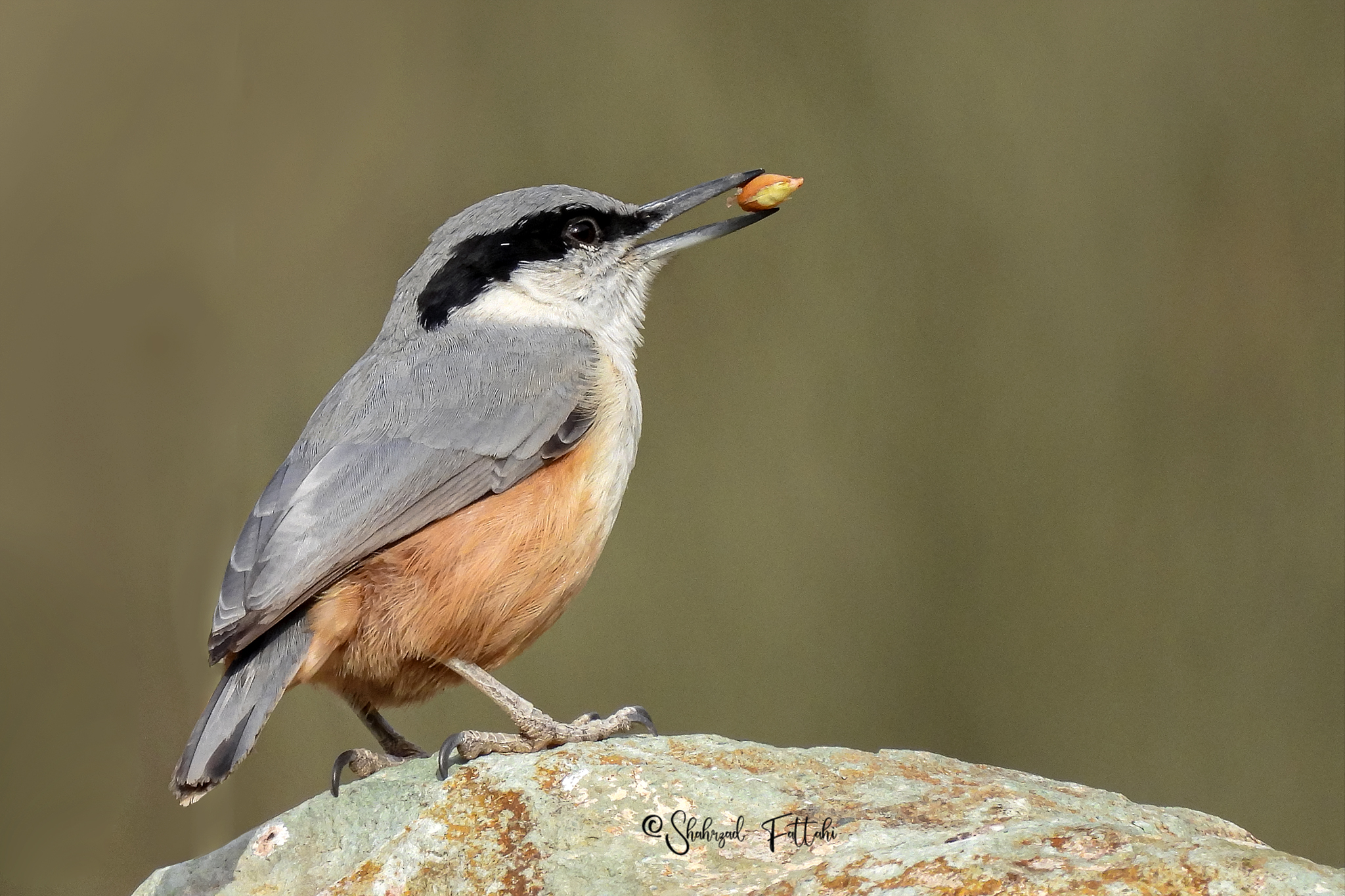Beautiful photograph, Shahrzad! If you have other high-quality photographs from Iran, feel free to post them here. Photographs of local subspecies of common 'European' species such as Green Woodpecker, Tawny Owl, European Robin, and Common Nutchatch would be very interesting.
Fotogalerij
| Mozaïek |
| Zeldzame soorten |
| Schaarse soorten |
| Overige |
| WP-soorten |
| Wereld-soorten |
| Determinatie |
| Historie |
| Dutch Bird Alerts |
| Dutch Birding 40 jaar |
| België |
| Belgian Bird Alerts |
| Zeldzaamheden België |
Eastern Rock Nuthatch
Sitta tephronota tephronota
| Datum | 22 januari 2022 |
|---|---|
| Locatie | Tehran / Iran |
| Fotograaf |
|
| Bekeken | 2567 × |
This attractive species also breeds in the mountains around Tehran. |
Discussie
George Sangster · 22 augustus 2022 14:26, gewijzigd 22 augustus 2022 14:30
Max Berlijn · 22 augustus 2022 16:18
Er was toch (genetisch??) iets met deze soort in een bepaald gebergte in Iran??
George Sangster · 22 augustus 2022 17:16, gewijzigd 22 augustus 2022 17:18
Yes, see:
Elverici, C, Önder, BŞ & Perktaş, U 2021. Mitochondrial differentiation and biogeography of rock nuthatches. Ardea 109: 215-227.
Rock Nuthatches comprise two morphologically similar species: Western Rock Nuthatch Sitta neumayer and Eastern Rock Nuthatch Sitta tephronota, with several subspecies within each species. These two species are closely related, and the two together are often considered an offshoot of the Sitta europaea group. The Western Rock Nuthatch is distributed across the Balkans to the Caucasus and Iran while the Eastern Rock Nuthatch is distributed across Eastern Anatolia, Iran, Afghanistan, Turkmenistan and Tajikistan. Using partial mitochondrial ND2 and ND3 gene sequences from populations throughout the distribution ranges and ecological niche modelling, we investigated the genetic structure and biogeographic history of these bird species. Two well-differentiated and supported clades in each species indicated a reciprocal monophyly with no gene flow between birds in the Zagros Mountains and other populations. Ecological niche modelling suggested population contraction in their potential habitat during the Last Glacial Maximum. The genetic differentiation in Zagros Mountains indicates that the post-glacial colonization of most of the Rock Nuthatch distribution range occurred from refugia located elsewhere than the Zagros Mountains. Given that Rock Nuthatches in the Zagros Mountains have long constituted an isolated population, there may be two phylogenetic species within each Rock Nuthatch species. Further genetic studies should be performed for taxonomic clarification.
See also:
Leonovich, VV, Demina, GV & Veprintseva, OD 1996. [To the taxonomy and phylogeny of rock nuthatches: Sitta neumayer rupicola Blandford, Sitta (tephronota) obscura Zarudny et Loudon, Sitta tephronota iranica Buturlin and Sitta tephronota tephronota Sharpe.] Byulleten Moskovskogo Obshchestva Ispytatelei Prirody Otdel Biologicheskii 101(4): 29‑38. [In Russian, English summ.]
Yousefi, M, Kaboli, M, Eagderi, S, Mohammadi, A & Rezaei, A 2015. Morphometric variation in Sitta tephronota dresseri populations along Zagros Mountains. Taxonomy and Biosystematics Journal 7(22): 23-34. [in Farsi, Engl. Summary]
Eduard Sangster · 23 augustus 2022 10:40
The taxa of Western Rock Nuthatch in Iran are (also) interesting as they lack the black mask and only have a small dark eyebrow.
Shahrzad Fattahi · 26 augustus 2022 08:09
Thank you @ George Sangster for your explanation and I have photos of different species from Iran that I will post here in due course and I am glad that it will be noticed.
Gebruikers van het forum gaan akkoord met de forumregels.
Forum spelregels
Dutch Birding Association beoogt met het forum in de fotogalerij de lezer een platform te bieden waarop informatief en inhoudelijk gediscussieerd kan worden over zeldzame en schaarse vogels. Het forum staat daarmee in het verlengde van het (semi-) wetenschappelijke karakter van het blad Dutch Birding.
Om het gebruik van het forum in goede banen te leiden, heeft Dutch Birding de volgende regels opgesteld: de moderatoren kunnen reacties verwijderen die
- een degelijke onderbouwing van de determinatie missen
- als beledigend of kwetsend kunnen worden ervaren door andere forumgebruikers
- off-topic zijn
- spam of reclame bevatten
- zij beschouwen als trolling
Auteurs die zich niet houden aan de bovenstaande regels krijgen een waarschuwing en bij herhaling van het overtreden van bovenstaande regels behoudt het DBA bestuur zich het recht voor om het account van de auteur te blokkeren.
De moderatoren hebben het recht om zonder opgaaf van reden, onder verwijzing naar de spelregels, reacties te verwijderen.
Erger je je aan het trollen van anderen, realiseer je dan dat met niet-reageren cq doodzwijgen het trollen het snelst stopt. Reageer niet! Sein de moderatoren in via foto@dutchbirding.nl, zodat zij gepaste actie kunnen ondernemen.


